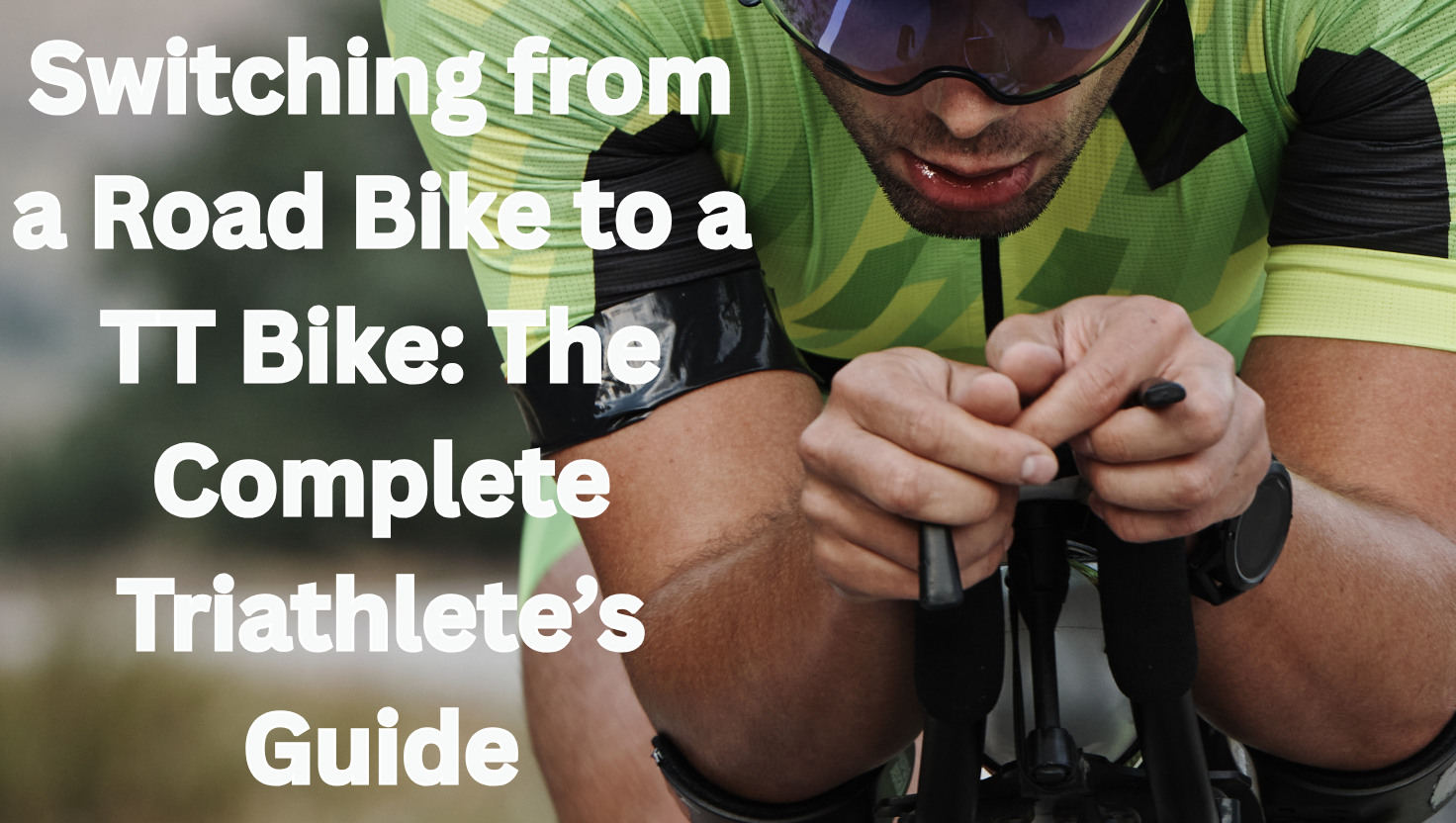Switching from a Road Bike to a TT Bike: The Complete Triathlete’s Guide

If you’ve been racing triathlons on a road bike and are thinking about making the leap to a time trial (TT) bike, you’re in for an exciting change—one that’s equal parts speed boost and learning curve. As someone who recently made the switch, I can tell you: it’s definitely a different ride.
Whether you’re a new triathlete looking to shave minutes off your bike split or a seasoned rider ready to optimize your aerodynamics, this guide breaks down what to expect, how to adapt, and whether a TT bike is right for you.
1. Road Bike vs. TT Bike: What’s the Difference?
On the surface, both have two wheels, drop bars, and clipless pedals. But their purpose, geometry, and feel on the road are worlds apart.
- Road Bike: Built for versatility, comfort, and climbing. Geometry is more upright, allowing better handling in tight turns or group rides.
- TT Bike: Designed for speed over solo efforts. The frame geometry pushes you forward into a more aerodynamic position, with aero bars replacing your traditional hoods for a narrow, wind-cheating profile.
In short: a road bike is your all-around athlete; a TT bike is your laser-focused race-day weapon.
2. The First Ride on a TT Bike Feels… Different
When you first hop on, it’s going to feel like you’ve been dropped into a slightly new sport. Here’s why:
- Position: Your hips rotate forward, and your back flattens to cut through the air.
- Steering: With most of your weight shifted forward, the bike feels twitchier at low speeds.
- Muscles Used: You’ll recruit slightly different muscle groups—especially in your quads and hip flexors.
Expect your first few rides to feel awkward, and don’t be surprised if your neck, shoulders, and lower back get sore. That’s just your body adapting to the aero position.
3. The Speed Advantage Is Real—But Only if You Adapt
A TT bike can be 2–4 minutes faster over 40 km than a road bike, assuming equal power output. That’s because aerodynamics is everything in triathlon cycling, especially in non-drafting races.
But here’s the catch:
- If you can’t stay in the aero position comfortably for most of the ride, you won’t see the full speed gain.
- Cornering, climbing, and technical descents are trickier on a TT bike—practice these before race day.
4. Training Tips for a Smooth Transition
Here’s how to go from wobbly in aero to race-ready:
- Start Small: Begin with short intervals in aero position and build up.
- Work on Core Strength: A strong core keeps you stable and reduces fatigue.
- Dial in Your Fit: A professional bike fit is non-negotiable for both comfort and efficiency.
- Ride Solo & With Wind: Get used to holding aero in various conditions.
- Keep Your Road Bike: Use it for group rides, hilly routes, or when you want a break from aero strain.
5. Is a TT Bike Worth It for You?
Ask yourself:
- Do you race primarily in triathlons or TTs where drafting is illegal?
- Are you chasing PRs or podium spots where minutes matter?
- Do you have the time to adapt to a new riding style?
If yes, a TT bike is an investment that can pay off big. If not, you can still crush races on a well-fitted road bike with clip-on aero bars.
Final Thoughts
Switching from a road bike to a TT bike isn’t just about buying speed—it’s about committing to a new riding style. Once you adapt, the feeling of slicing through the air on race day is unmatched.
Pro tip: Give yourself at least 6–8 weeks on the TT bike before your first race to fully adapt.

